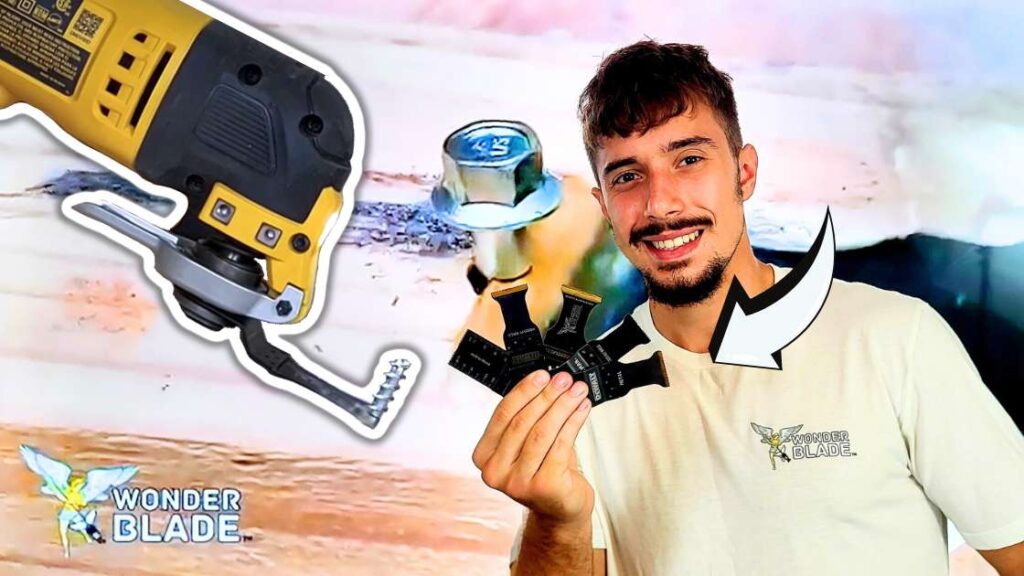
DIY or Professional enthusiasts who do not possess an oscillating tool blade are severely missing out. Those who already have one but are uncertain how to utilize it properly also miss big time. Remember that only top-quality oscillating tool blades will deliver on their promises. Hence, selecting and learning how to operate an oscillating multitool is equally essential to harness its potential powerfully.
Searching for an oscillating tool was once limited in number. However, more manufacturers have produced oscillating multitools in recent years since the earliest patent expired in 2008.
When you pair an appropriate oscillating instrument with its blade of choice, most will provide outstanding overall quality, durability, and performance – but its importance cannot be overstated as blade quality remains vitally essential in ensuring any machine meets expectations. Selecting an optimal blade ensures its lifespan, accuracy, and effectiveness – choosing correctly can save a tool’s lifetime, accuracy, and effectiveness!
If you need the perfect tool, don’t worry. This How to Choose the Right Blade Oscillating Multi Tool Blades Guide will help you take each step to find the best place on the market.
Before you invest in an oscillating multi-tool, it’s crucial to understand what makes these tools the best DIY option. An oscillating multi-tool, often known as an oscillating saw, is a power tool that vibrates rather than spins or reciprocates. Either electricity or a strong battery usually powers it. Its blades’ rapid yet controlled oscillation, which typically oscillates 18,000-21,000 times per minute, creates friction, allowing you to use your tool effectively for any operation.
Fein, a German company, developed the oscillating tool in 1967 to make removing plaster casts easier without injuring patients. Today, it’s a versatile tool that can be used for various purposes. The three primary uses are:
An oscillating tool can perform multiple operations by simply changing its blade or attachments, so to be most efficient, you must choose a blade with only the highest-grade blades available. For selecting only premium-quality blades, in this How to Choose the Right Blade Oscillating Multi Tool Blades Guide, you see the best available in the market in the next section after going through the factors to look for the best ones.
Several factors must be considered when choosing an oscillating blade. The primary elements listed below are those you should focus on when selecting the multi-tool blade for your ideal oscillating tool.
The blade’s construction material is crucial for its prolonged life, and while cheap options are available, they are not suitable for long-term investment.
Carbon Steel Blades
High-carbon steel, used to make these oscillating multitool blades, is robust, resilient, rust- and wear-resistant, and challenging to shatter or distort. They are made with a curved edge that offers the blade more control and allows for smooth, precise cutting. They are lightweight, reasonably priced, and meet cutting requirements. It is best suited for light-duty cutting in pliable materials, and its lifespan is limited for demanding tasks.
High-Speed Steel (HSS) Blades
Blades made of high-speed steel (HSS) are more robust than carbon steel and appropriate for heavy-duty work. They are also heat-resistant and flexible, making them excellent for cutting various materials, including sheet metal, copper tubing, aluminum profiles, PVC, and wood.
Bi-Metal Blades
Blades made of bimetal (BIM) are intended for use in metal cutting operations. They are excellent for cutting wood with embedded nails because they are more resilient, powerful, sharper, and long-lasting than regular blades. The use of high-carbon and high-speed steel ensures excellent wear resistance and durability.
Diamond-Coated Blades
High-durability diamond-coated blades are made to cut through hard, abrasive materials that would soon dull conventional blades. The small diamond particles implanted in the cutting edge give these blades an additional layer of strength and durability. Best For cutting tough and abrasive materials such as tile, stone, masonry, concrete, and grout.
Carbide-Tipped
With a 30 times longer cutting life than typical bi-metal blades, this oscillating saw blade with carbide teeth is made for demanding metal applications. It is powerful and long-lasting for hardened materials, including fiberglass, plasterboard, screws, nails, and stainless steel. Generally less expensive than diamond-coated blades, they are a cost-effective option for metal and wood cutting.
Oscillating multi-tools and blades have evolved into two categories, either as universal or proprietary designs.
Proprietary Fitting Blades
A blade made for one oscillating tool may not fit another because some blades are made to fit particular oscillating tool makes and models. Nevertheless, different manufacturers make specific blades to work with oscillating tools. This will narrow down your options for blades, and it could result in you paying more for a particular brand.
Universal Fitting Blades
Primarily due to the patent expiring, most oscillating tools on the market now are Universal Fit models. Some manufacturers produce universal fits for your preferred brands, providing a wide range of possibilities, including the chance to select from less expensive brands and save some extra for emergencies.
Getting the suitable oscillating multi-tool blade selection requires carefully considering your project needs. Think carefully about the material being cut first- wood, metal, plastic, or tile- before choosing an oscillating multi-tool blade for complex woodcuts or tile removal.
Consider blades with small tooth patterns for precise wood cutting, while coarser teeth work better when making faster, rougher cuts. Bi-metal or carbide-tipped blades work best when handling nails, screws, or pipes safely. At the same time, grout removal tools equipped with carbide or diamond coatings ensure accurate, clean results for accurate grout removal results.
When in doubt, general-purpose blades can help perform many activities on both soft and wood materials, while specialty blades provide more precise and long-term work on materials like tile or metal.
Price and quality are two factors when pricing oscillating multi-tool blades, with standard wood or metal blades typically costing $10-20. At the same time, those featuring diamond or carbide tips could go as high as $30 or more per blade. But it is the best idea to invest in packs of blades.
Bulk purchases of quality blades, such as those manufactured by top manufacturers, often prove more economical. Those on tight budgets would find it tiring to compare all the best options available from many companies before making their final selections. However, the three best options from WonderBlade™ are discussed in the next section.
If you are seeking the best available options in the market, then the options below are the best you can buy to finish your projects.
Are you in search of an oscillating blade capable of cutting through hard materials such as wood, nails, screws, plastic and thin metals without quickly wearing out? Look no further. This High-Strength Carbide™ Oscillating Tool Blade offers reliable performance over its lifespan.
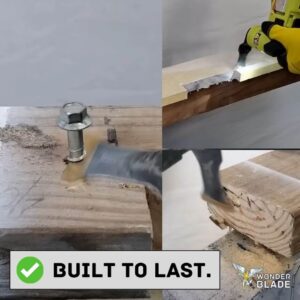
This blade stands out as one of the strongest in its industry due to its High-Strength CarbideTM teeth, known for their exceptional endurance and cutting power, as opposed to ordinary blades, which become dull over time.
It saves time and money and reduces trips to the hardware shop by eliminating regular blade replacement needs. This blade produces reliable, high-performance results, whether cutting through thick wood, working on demolition projects with nails and screws, or performing delicate operations such as siding cutting.
Moreover, the WonderBlade™ Guarantee protects the blade from flaws and breakages, making this blade ideal for both professionals and DIYers who require reliable blades for challenging tasks.
Despite its effectiveness on various materials, this blade should not be used to cut through concrete. Professional handymen and reviews on the official website attest to its robustness and efficiency, solidifying its position as their go-to option.
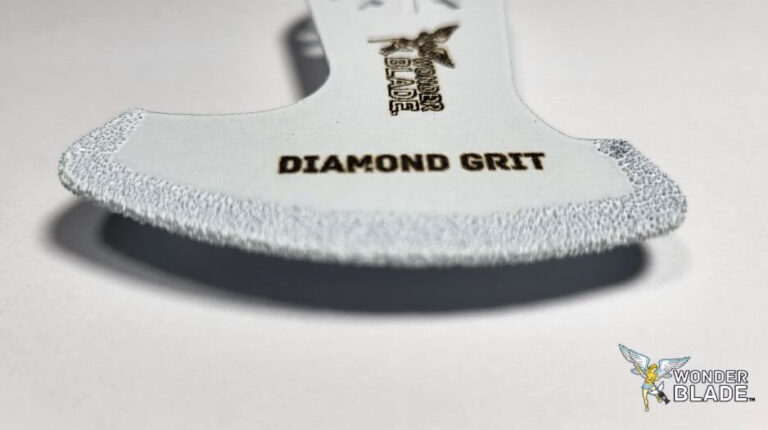
The Diamond Oscillating Tool Blade is an outstanding option for tile work due to its exceptional cutting accuracy and durability. The Segment Boot Shape blade is best used when working in tight corners or around edges where precision and maneuverability are required. Its unique shape lets you quickly access hard-to-reach areas, making it ideal for detailed grout removal in intricate spaces.
The diamond coating makes working with hard materials like stone tile grout easier. The diamond coating extends blade life through repeated usage, saving time and money with decreased replacement requirements. Plus, it comes with a WonderBlade™ Guarantee against flaws or breaks!
Diamond-coated blades provide greater endurance and improved accuracy and can easily cut through rigid materials for DIYers and professionals alike. Impact-resistant Safety Glasses (OSHA Approved) are included in the package as added protection, making this comprehensive, long-term solution perfect for challenging tile work projects.
Note: For projects that require straight, precise grout removal, the Diamond Oscillating Tool Blade with Straight Head is an excellent alternative to the Segment Boot Shape. The straight-head design allows for quicker, more consistent grout removal, especially when working in larger areas or on consecutive lines between tiles.
The Diamond Finger Rasp Oscillating Tool Blade was created for precise tasks, making it the perfect tool for detailed grout or tile removal. The blade’s shape was also a game-changer. Its finger-like shape allows access to tight areas, enabling easier removal of small sections than standard blades.
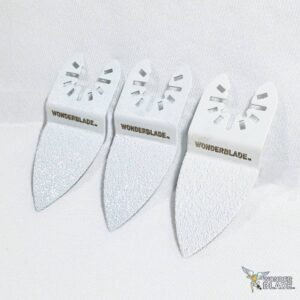
The diamond covering made it extremely resilient, withstanding numerous cuts without displaying any signs of wear.
You get superior control when working around intricate spaces or delicate surfaces, ensuring a smooth finish without damaging nearby materials. It is built to ensure durability, is designed to handle multiple cuts, and is again backed by the WonderBlade™ Guarantee, which covers defects or breakages, ensuring long-term performance and peace of mind.
An oscillating multi-tool is an invaluable tool for any DIY or professional. While this tool has many attachments, we focused only on the oscillating tool blade. In reality, this blade will likely become your go-to piece of gear. Before choosing an oscillating multitool blade, it is essential to carefully assess the material you will be cutting and its form, size, and construction.
Since there are many considerations when making your selection, be sure to carefully weigh features, budget, and long-term effects when making your decision. To guarantee optimal performance and desired outcomes from your oscillating multitool, take your time while choosing the appropriate blade for the job.
Everything comes down to the blade’s purpose; more expensive blades may eventually wear out more quickly, while less costly choices still offer great functionality at an acceptable cost that can be replaced repeatedly.
Select the option best suited to your task and complete assignments efficiently and quickly. Learning more about each blade type will allow you to approach any task with confidence and accuracy—be it cutting through masonry, metal, or wood. Our top choice would be the High-Strength CarbideTM Oscillating Tool Blade, as its design makes it suitable for general-purpose use with no worries.
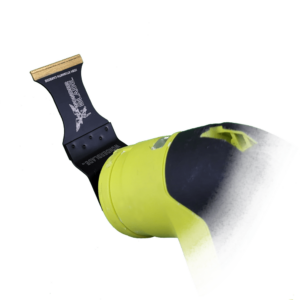
*However, the major issue is that many blades that you’ll find in your local hardware store tend not to last, here at WonderBlade we have an all around General Purpose Oscillating Tool Blade that lasts time and time again against hundreds of cuts through wood, fiber cement, sheetrock, plastic and more*
Submit your questions, thoughts, or concerns to help us make better content just for you: